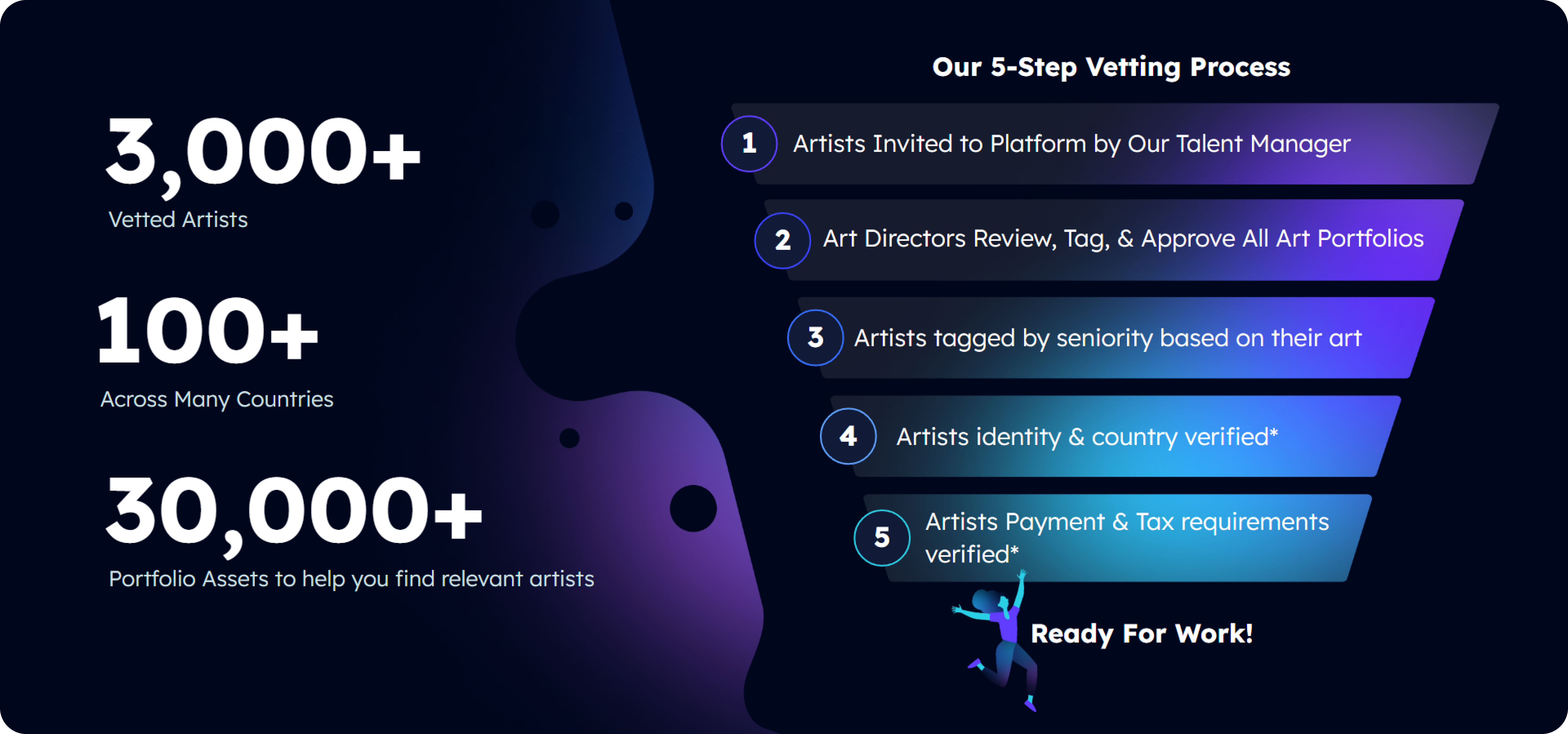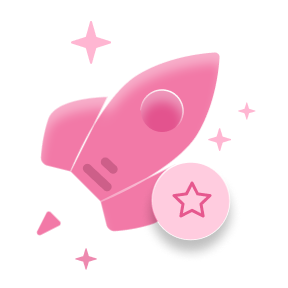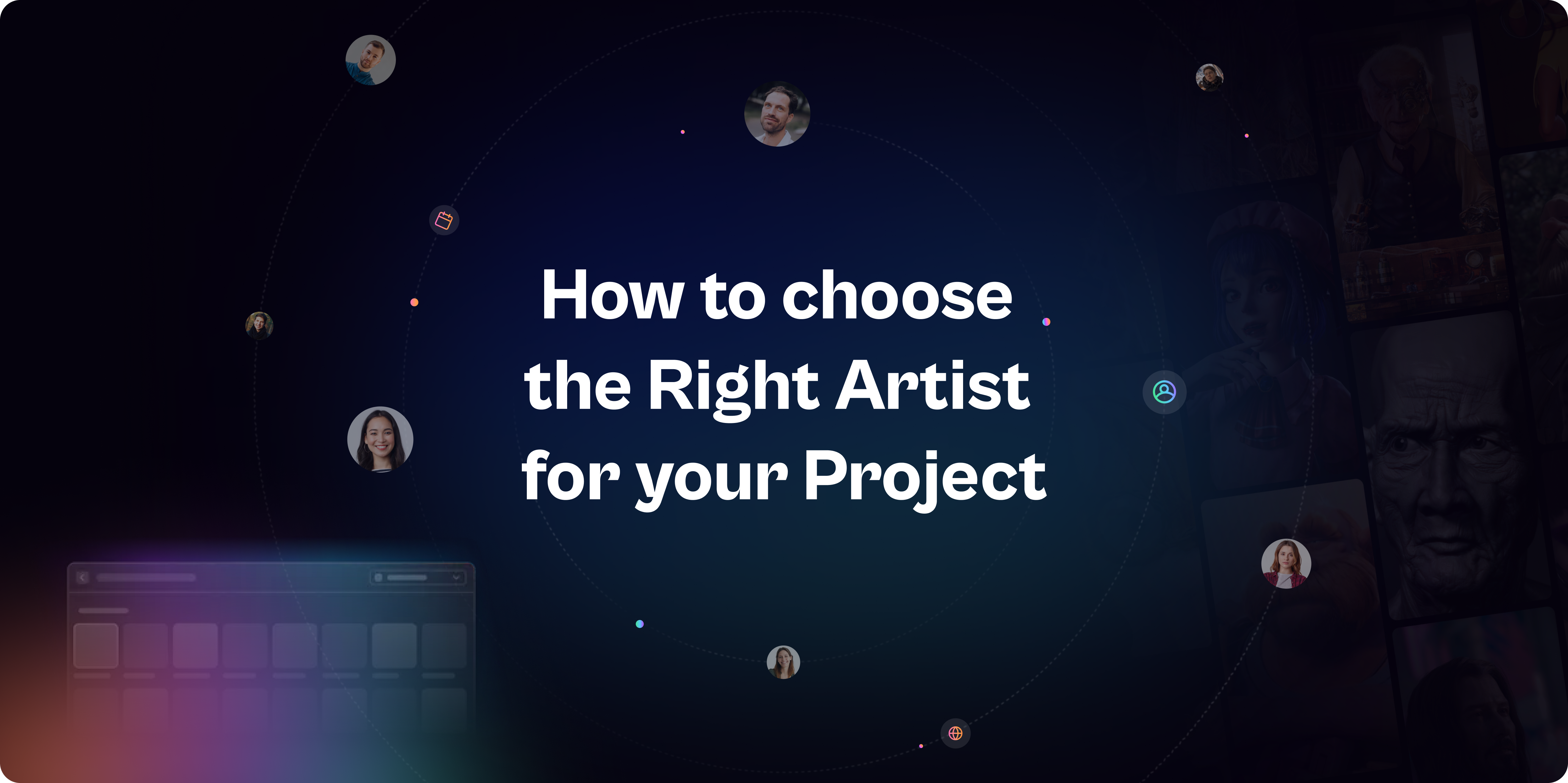Choosing the right artist for your game project is a challenge of its own, but it’s also one of the most important decisions you’ll ever make. Whether you’re looking to hire a 3D props artist, hire a concept artist, hire a character artist, or hire a 3D animator, it’s important to find someone who not only has the right skills but also fits your team.
With insights from Julia Levchenko, our game producer at Devoted, this article will guide you through the key factors to consider when choosing an artist for your project. Julia’s experience working with a global network of artists has given her unique perspectives on what makes an artist successful in outsourced game development, and her advice is invaluable for making the right choice.
Get to Know Julia Levchenko
Julia Levchenko is a game producer at Devoted, where she leads teams to create amazing game art. With over 15 years of experience, Julia started in the game industry because she was curious about how video games are made and fell in love with the world of game artists.
 Julia works with artists from around the globe, managing teams of different sizes, and making sure projects are completed on time and with great quality.
Julia works with artists from around the globe, managing teams of different sizes, and making sure projects are completed on time and with great quality.
The First Step Is to Understand the Project’s Artistic Needs
The first step in choosing the right artist is understanding the specific requirements of your project. This means being clear about the type of art, style, and technical specifications you need. Every project has unique demands, so it’s essential to know exactly what you’re looking for before starting your search.

According to Julia, “Depending on the type of art, first of all, we need to think about project technical and/or style requirements and at which level this or that artist can meet them.”
For example, you might need to hire a 3D props artist to create a modular environment or assets for your game with a specific texturing pipeline. On the other hand, if you’re in the early design stages, you may need to hire a concept artist to establish the overall visual direction of the project. For animations and movement, you’ll need to hire a rigger, a 3D animator.
One effective tool to simplify this process is Fusion by Devoted’s Smart Search feature.
By using this feature, you can search for specific artist skills and portfolios that match your project’s needs. For instance, if your project requires stylized environments, you could write a query like: “3D stylized environment building.”

You can also tailor your search to specific skills, styles, and project needs. If you’re looking for an artist who specializes in realistic 3D characters, you might search for: “realistic character design artist.” Or, if your project requires complex animation, try: “Stylized 3D animators.”
Understanding the specific artistic needs of your project will help you target the right candidates, no matter if you’re looking for a concept artist to help define the visual style or a 3D animator to bring characters to life.
Ask Yourself:
- What type of art does my project need?
- What software or technical skills are required?
- What style does the game follow, is it: Realistic, stylized, cartoonish, abstract, pixelCel-shaded, hand-paint, stylized or stylized realism?
Once you’re clear on your needs, you can better target artists who are capable of delivering on them. However, keep in mind that Fusion offers even more styles and artistic expertise, so you can explore a wide range of options to suit any project’s requirements.
Then, Evaluate Hard Skills Through Portfolios
The next important step is to evaluate the artist’s hard skills, which are usually showcased in their portfolio. A good portfolio will highlight their best work and give you a sense of whether they can meet the quality and style expectations of your project. When you’re looking to hire a character artist, for instance, you’ll want to see past work that demonstrates they can create compelling characters that align with your vision. Julia highlights this point, saying, “We need to think about the level of hard skills an artist can bring to meet project requirements. If an artist can’t meet the quality, everything else becomes irrelevant.”

When reviewing portfolios, make sure the artist has experience working on similar projects. If you’re looking to hire a character artist, for instance, you want to see previous work that demonstrates proficiency in creating characters that match your game’s style and complexity.
Tips for Reviewing Portfolios:
- Look for projects similar to yours in terms of style and complexity.
- Pay attention to the consistency of the work. Does the quality hold up across different pieces?
- Check if they’ve worked on game projects before. Experience in games, particularly in similar genres, can be a huge plus.
But with Fusion, you don’t need to take any extra steps. All the artists are already pre-checked and sorted by their skill level, so you can quickly find the right artist for your project without any extra work.

Always Prioritize Good Communication
Even if an artist has exceptional skills, poor communication can lead to serious problems. Julia points out that one of the most critical factors when choosing an artist is their ability to communicate effectively. Julia says, “When I start to work with an artist, first of all I pay attention to communication and commitment.”
“If from the beginning an artist doesn’t respond how we agreed, it’s a high chance we will not fit each other. It is what it is.,” she continues.
Good communication helps make sure that feedback is understood and deadlines are met. For global teams like those at Devoted Studios, where artists work remotely from different time zones, effective communication is number one to keeping the project on track.

What to Look for in Communication:
- Responsiveness: Does the artist reply to emails and messages promptly?
- Clarity: Are they clear in their questions and responses?
- Professionalism: Do they handle feedback well, and are they open to discussions?
Tips from Julia: If you’re torn between two equally skilled candidates, Julia advises choosing the one who communicates better. “Politeness and interest in the project go a long way,” she adds.
Consider Practical Details: Time Zone, Language, and Availability
One thing many people overlook when hiring artists is the practical aspect. If you’re working with remote artists, you’ll need to think about how their time zone and language skills might affect the workflow. Julia mentions that while hard skills are the most important factor, practical considerations like availability, language, and time zone alignment can also make or break a project.
Key Practical Considerations:
- Time Zone: Will you need the artist to be available for meetings in your time zone?
- Language: If English is not the artist’s first language, can they still communicate effectively with the team?
- Availability: Do they have the capacity to meet your project deadlines?

Being clear about these details upfront will help avoid problems later. The great thing about our platform is that these details — time zone, language, and availability — are already shown for each artist, making it easy to find someone who fits your project needs.
Next Step, Use Test Projects to Evaluate Fit
Whenever you’re feeling unsure whether an artist is the right fit for your project, it’s a good idea to give them a small test project. This will allow you to see how they work in real conditions, how well they understand and apply feedback, and how they communicate throughout the process. Julia explains, “We judge by the first delivery and the first feedback implemented.”
Julia explains, “We judge by the first delivery and the first feedback implemented.”
A test project is especially helpful when you’re hiring a junior artist or someone who doesn’t have a lot of game industry experience. For example, if you’re looking to hire a 3D animator, a test project will give you a sense of their animation style and how quickly they can iterate based on feedback.
What to Watch for in Test Projects:
- How well does the artist follow instructions?
- Do they ask relevant questions if something is unclear?
- How quickly do they deliver the work?
- Are they open to feedback and can they implement changes?
Choose Artists Who Show Commitment and Enthusiasm
Hiring an artist isn’t just about finding someone who can do the job. It’s also about finding someone who is genuinely interested in the project and committed to delivering high-quality work. Julia emphasizes the importance of choosing artists who show commitment early on, she says, “We support open communication with our artists, especially in situations where unexpected challenges arise. It’s good to have less stress by assuring high-quality delivery through strong communication.”

When hiring, look for artists who show excitement for the project and ask thoughtful questions. These are signs that they are engaged and likely to be reliable team members.
Consider These:
- Does the artist seem interested in the project beyond just completing the task?
- Are they proactive in communicating progress and updates?
- Do they show initiative in improving or refining their work?
Once You’ve Got What You Need, Remember to Support and Nurture Your Artists
Once all the processes are completed, it’s important to create a positive working environment for your artists. Game development is often stressful, and providing support can help ensure that the artists remain committed and deliver their best work. Julia mentions that Devoted Studios helps guide artists during the onboarding process to ensure smooth project kick-offs.
Supporting your artists and offering constructive feedback can help build a lasting working relationship. If you decide to hire a concept artist or hire a 3D props artist, providing clear references and feedback will help them align better with the vision of your game.
How to Support Your Artists:
- Provide clear and constructive feedback regularly.
- Be available to answer questions and resolve challenges.
- Celebrate their achievements and acknowledge their hard work.
Choosing the right artist for your game project requires a combination of evaluating hard skills, communication abilities, and practical logistics like time zone and availability. Whether you’re looking to hire a 3D props artist, hire concept artist, hire character artist, or hire 3D animator, finding the perfect fit takes time but is well worth the effort.

As Julia Levchenko points out, balancing technical expertise with strong communication and commitment is key to ensuring a successful project. So, carefully consider these factors and provide support to your artists, and you’ll be on track to create something truly amazing.
